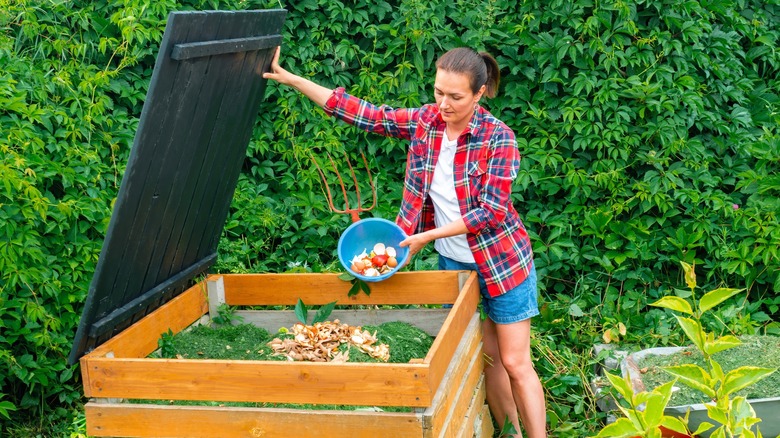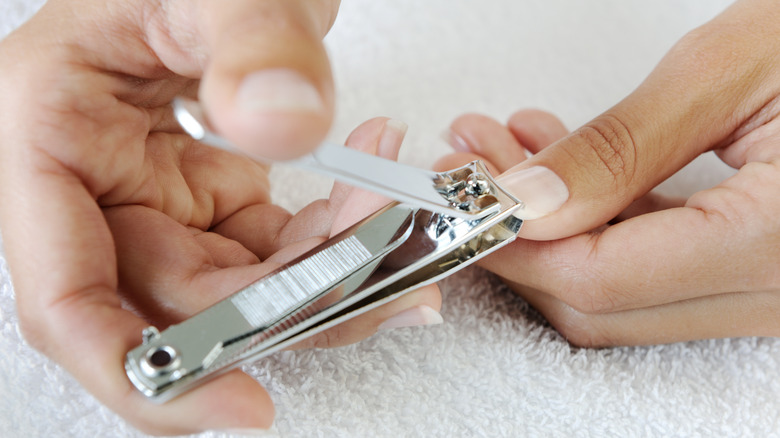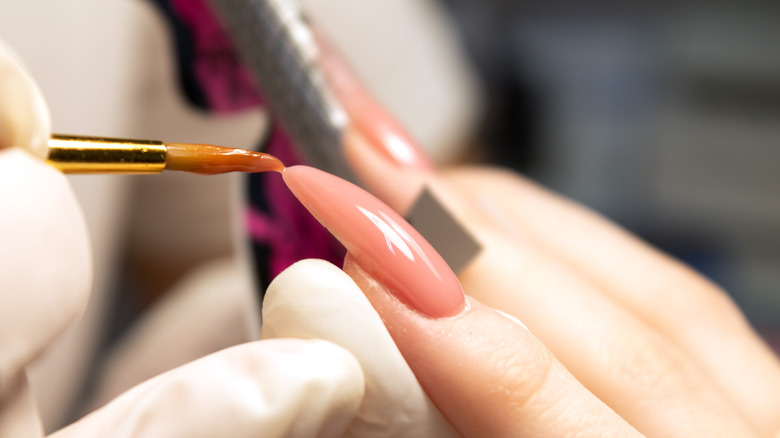The Unusual Compost Ingredient That You Can Find On Your Body
Even the most novice composters have heard of the usual ingredients for the typical heap, like coffee grounds, kitchen scraps, and egg shells. Gardeners who are looking to level up the compost bin should look no further than their own fingernails for a boost. That's right, fingernail clippings are an ideal addition to any DIY compost heap!
Gardening enthusiasts often turn to composting to add extra oomph to the soil, benefiting all varieties of plants. Composting can be done in a pile or a container, requiring a bit of technique and know-how to create the appropriate balance of carbon, water, air, and nitrogen to get the job done. All of these organic elements, which come from plant cuttings, grass clippings, and certain types of kitchen waste, will eventually decompose. This can take between two weeks and two years and depends on several factors, like how large the compost pile is, the specific materials in the pile, and how frequently it is turned. At some point, the process will create a deep brown, nutrient-rich substance that can be mixed into the soil to help plants truly thrive. As it turns out, the natural composition of fingernails (and toenails!) makes it another excellent ingredient to add to the mix.
This is why nail clippings are good for compost piles
The point of composting is to help plants grow to their healthiest, strongest potential. This is done by using items that contain a lot of nutrients, which help keep the pH in check, balance the density of the soil, and much more. Fingernails are naturally rich in biotin and keratin, and when they break down, bacteria and microorganisms get to snack on the fingernails. Then, they excrete the nails in the form of beneficial nutrients. Pretty cool, right?
It's vitally important to balance the elements of the compost pile. Too much food waste or too many grass cuttings are going to throw everything out of whack. Fingernails, for the record, are a good way to add more carbon into the mix. Really good composts involve rotating layers of high-nitrogen items (like kitchen scraps, coffee grounds, and grass clippings) and low-nitrogen odds and ends (leaves, wood chips, shredded paper, etc.) The top layer should always be carbon to stop flies from getting involved. Since nail clippings generate carbon, this is a good spot for them.
Never compost these types of fingernails
Fingernails make a great addition to any compost heap because they're organic and thus biodegradable. This negates the composting potential of nails that have any polish on them. Never attempt to compost acrylic or other types of fake nails, because any associated chemicals will adversely affect the compost and potentially wreck your garden. Also, acrylics are not biodegradable, which means they won't break down at all.
Other things that you should not add to compost include wood ash, human or pet waste, dairy products, and meat, to name a few. These will only invite pests or otherwise taint the compost pile, rendering it unusable. That would be a huge waste, which is a tremendous shame since most people who compost are trying to avoid waste altogether. When you're finally ready to use your compost, simply integrate it into the top 4 inches of soil, then sit back and watch your garden grow like never before.


